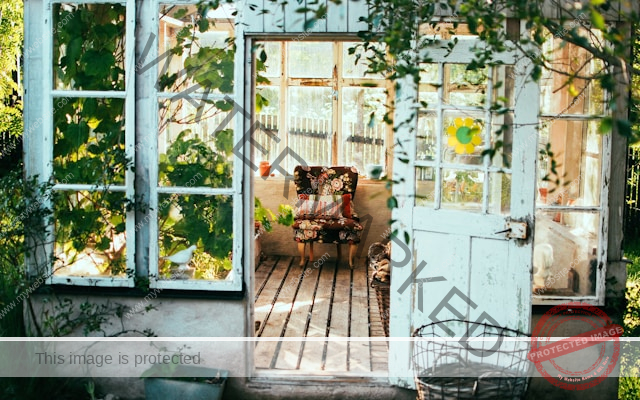
Creating a beautiful and thriving East-Facing Balcony Garden is a rewarding endeavor that allows you to enjoy the benefits of nature right outside your door. Whether you’re a seasoned gardener or a beginner, transforming your East-Facing Balcony into a lush, green oasis is entirely achievable. This comprehensive guide will walk you through the steps to make the perfect East-Facing Balcony Garden, ensuring your plants thrive and your space looks stunning.
Understanding the Benefits of an East-Facing Balcony Garden
An East-Facing Balcony Garden offers several advantages:
- Morning Sunlight: East-facing balconies receive gentle morning sunlight, which is ideal for many plants. This light is not as harsh as the afternoon sun, reducing the risk of scorching delicate foliage.
- Cooler Afternoons: With less direct sunlight in the afternoon, the temperature remains cooler, which is beneficial for plants that prefer moderate conditions.
- Extended Growing Season: The combination of morning sun and cooler afternoons can extend the growing season for certain plants, allowing you to enjoy fresh produce and flowers for a longer period.
Planning Your East-Facing Balcony Garden
Assessing Your Space
Before you start planting, take a close look at your East-Facing Balcony. Consider the following factors:
- Size: Measure the dimensions of your balcony to determine how much space you have for plants and furniture.
- Sunlight: Observe how the sunlight moves across your balcony throughout the day. Note the areas that receive the most light and those that remain shaded.
- Wind: Check for wind patterns on your balcony. Wind can affect plant health, so you may need to provide some protection for delicate plants.
Choosing the Right Plants
Selecting the appropriate plants is crucial for a successful East-Facing Balcony Garden. Here are some plant types that thrive in this environment:
- Herbs: Basil, mint, parsley, and chives grow well with morning sunlight and can be easily grown in pots.
- Flowers: Marigolds, petunias, and pansies are excellent choices for adding color to your balcony.
- Vegetables: Leafy greens like spinach and lettuce, as well as root vegetables like carrots and radishes, do well in the mild morning sun.
- Climbers: Plants like morning glories and sweet peas can add vertical interest and provide some shade for other plants.
Designing Your Balcony Garden
Creating a visually appealing East-Facing Balcony Garden involves thoughtful design. Consider these tips:
- Vertical Gardening: Use trellises, hanging pots, and wall-mounted planters to maximize space.
- Container Choices: Select containers that suit your plants’ needs and complement your balcony’s aesthetic. Ensure they have proper drainage.
- Color Scheme: Choose a cohesive color scheme for your plants and containers to create a harmonious look.
- Furniture: Include comfortable seating and a small table to create a relaxing space where you can enjoy your garden.
Setting Up Your East-Facing Balcony Garden
Preparing the Soil
Healthy soil is the foundation of a thriving East-Facing Balcony Garden. Use high-quality potting mix and consider adding organic matter like compost to improve soil fertility and drainage.
Planting
Follow these steps to plant your East-Facing Balcony Garden:
- Start with Large Containers: Place the largest containers first, positioning them in the sunniest spots.
- Layer Smaller Pots: Arrange smaller pots around the larger ones, considering the sunlight needs of each plant.
- Plant Climbers and Vines: Set up trellises or other supports for climbing plants, ensuring they receive adequate sunlight.
Watering and Maintenance
Proper watering and maintenance are essential for the health of your East-Facing Balcony Garden:
- Watering: Water your plants early in the morning to minimize evaporation and ensure they have enough moisture throughout the day. Be mindful not to overwater, as this can lead to root rot.
- Pruning: Regularly prune dead or damaged leaves and stems to encourage healthy growth.
- Fertilizing: Use a balanced fertilizer to provide essential nutrients. Follow the recommended application rates to avoid over-fertilizing.
Adding Features to Enhance Your Balcony Garden
Incorporating Seating and Decor
Create a comfortable and inviting space by adding seating and decor:
- Furniture: Choose weather-resistant furniture that fits the scale of your balcony. A small bistro set or a cozy chair can make your garden more enjoyable.
- Lighting: String lights, lanterns, or solar-powered garden lights can create a magical ambiance in the evening.
- Decorative Elements: Add personal touches like wind chimes, garden statues, or colorful cushions to enhance the aesthetic appeal of your balcony garden.
Utilizing Vertical Space
Maximize your East-Facing Balcony Garden by using vertical space:
- Hanging Baskets: Plant trailing flowers or herbs in hanging baskets to add visual interest.
- Wall Planters: Install wall-mounted planters to grow herbs, succulents, or small flowers.
- Shelves: Use shelves to display smaller pots and create additional planting space.
Creating a Microclimate
Protect your plants from harsh weather conditions by creating a microclimate on your balcony:
- Windbreaks: Use screens, trellises, or tall plants to shield your garden from strong winds.
- Shade Cloths: Install shade cloths to provide relief during particularly hot days.
- Misting System: Consider adding a misting system to keep your plants hydrated during dry periods.
Seasonal Care for Your East-Facing Balcony Garden
Spring
- Planting: Start planting new seeds and seedlings. Focus on fast-growing vegetables and early-blooming flowers.
- Fertilizing: Begin a regular fertilizing schedule to support new growth.
- Pest Control: Monitor for pests and take preventive measures to protect your plants.
Summer
- Watering: Increase watering frequency during hot, dry periods.
- Pruning: Continue pruning to remove spent flowers and encourage new blooms.
- Harvesting: Harvest herbs, vegetables, and flowers regularly to promote continuous growth.
Fall
- Planting: Transition to cool-season crops like leafy greens and root vegetables.
- Fertilizing: Apply a final round of fertilizer before winter.
- Cleaning: Remove dead plants and debris to prevent disease and pests.
Winter
- Protection: Move sensitive plants indoors or provide extra protection with frost cloths.
- Watering: Reduce watering frequency, but don’t let the soil dry out completely.
- Planning: Use this time to plan for the next growing season and order seeds.
The Role of Design and Safety in Balcony Gardens
Safety Considerations
Safety is paramount when setting up your East-Facing Balcony Garden:
- Weight Limits: Ensure your balcony can support the weight of your pots, soil, and furniture. Consult a professional if needed.
- Secure Pots: Use sturdy containers and secure them to prevent accidents caused by wind or movement.
- Fire Safety: Avoid placing flammable materials near heat sources like grills or fire pits.
Design Inspiration from Bay Area Cable Railing
According to Bay Area Cable Railing, incorporating sleek, modern design elements can elevate the look of your balcony garden. Cable railings offer a minimalist and unobtrusive solution that enhances the overall aesthetic while providing safety. Here are some design tips inspired by Bay Area Cable Railing:
- Open Views: Cable railings maintain open views, making your garden feel more spacious and connected to the surroundings.
- Modern Aesthetics: The clean lines of cable railings complement contemporary balcony designs, creating a cohesive look.
- Durability: Made from stainless steel, cable railings are durable and resistant to the elements, ensuring longevity.
Conclusion
Creating the perfect East-Facing Balcony Garden is a fulfilling project that brings nature to your doorstep. By understanding the benefits of an East-Facing Balcony, planning thoughtfully, and selecting the right plants, you can transform your space into a green oasis. Remember to consider design and safety aspects, drawing inspiration from experts like Bay Area Cable Railing. With proper care and attention, your East-Facing Balcony Garden will thrive, providing you with a serene and beautiful retreat for years to come
